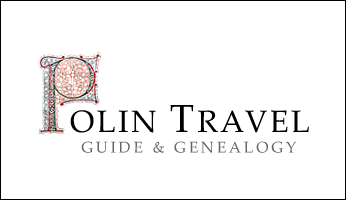News from Galicia
GUIDING AND TOURISM IN THE TIMES OF PANDEMICS OF CORONAVIRUS AND COVID-19
GUIDING AND TOURISM IN THE TIMES OF PANDEMICS OF CORONAVIRUS AND COVID-19.
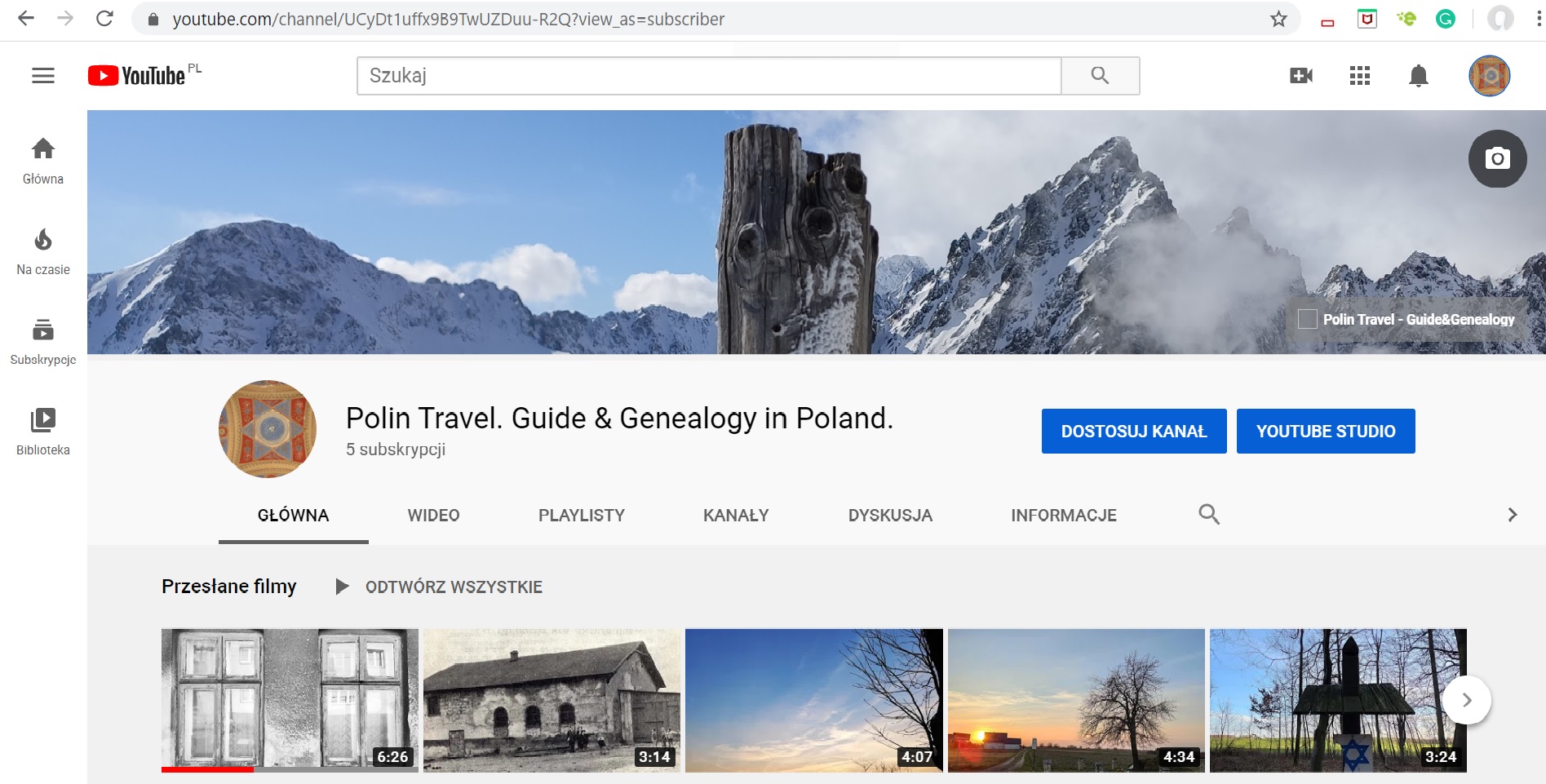
One of the things I am addicted to is talking and interpreting the historical sites, specifically Jewish Heritage sites. The coronavirus is not going to stop me. The Coronavirus made me go on-line and start the YouTube channel on history, genealogy and guiding. You are more than welcome to:
https://www.youtube.com/channel/UCyDt1uffx9B9TwUZDuu-R2Q/
The first film connects the Jewish sites in Poland with global pandemics and gives hope for fast recuperation.
As for now - stay at home.
Yes, epidemics and pandemics happen, they happen recurrently. And then they go away. Try to think more about the post-pandemic reality and how to make it better and more secure.
_________________________
The first film is very up to date as it is at the Jewish cholera cemetery in Skała. FILM AT THE JEWISH CHOLERA CEMETERY IN SKAŁA
Plagues and pandemics do happen. We just forget that they do. In our XX-XXI centuries lives we put all our trust in modern research-based medicine following the best possible practices to keep us secure and healthy. At times, the system has to say that it has no more answers or possible treatments but such situations we know only to be individual and personal dramas, never collective pandemics.
The Coronavirus we have now, which causes COVID 2019 is just the next recurrence of a viral illness.
The last known massive flu pandemic was Spanish influenza in 1918-1920. The estimates are 500 million people around the world infected that made 27 % of the global population, even in the Arctic and remote Pacific islands. The mortality was anything between 17 and 100 million in total. The spread was largely hastened globally with the WW I army troops' movements.
Cholera reappeared 7 times in the last 200 years taking a massive death toll. The last one in 1961 originated in Indonesia. More recently due to wars and humanitarian crises we had an outbreak in South America in 1991-1994 and Yemen 2017-2020.
The fifth epidemic of cholera originated from India, most likely Calcutta and had a European outbreak in the harbor city of Hamburg in Germany in 1892. Killing over 8600 residents. It lasted in Europe till 1896 and took 267,890 lives in Russia (1892 till 1896); 120,000 in Spain; 90,000 in Japan and over 60,000 in Persia. In Egypt, cholera claimed more than 58,000 lives.
This was the last European cholera pandemic.
It was an inspiration for scientific explorations and breakthroughs of Robert Koch who first explained the theory of germs causing diseases. This epidemic was immortalized in the writings of Gabriel Garcia Marquez – “Love in the Time of Cholera” and Mark Twain who visited Hamburg in 1892. He notices that the general lack of awareness and media coverage contributes to the death toll. He writes “snatched from their homes to the pest houses", where "a good many of them ... die unknown and are buried so".
Twain concludes alarmingly about almost complete global ignorance of this outbreak and the lack of awareness in America.
This is the film of two cemeteries hidden in the forest next to the city of Skala, some 10 miles north of Cracow in Poland. One of those Christian the other Jewish. Both of them were established in 1896 at a distance of two miles from the city to bury the local cholera victims. Yes, epidemics and pandemics happen, they happen recurrently. And then they go away. Try to think more about the post-pandemic reality and how to make it better and more secure.
Jan Karski monument in Kraków at the Remuh synagogue
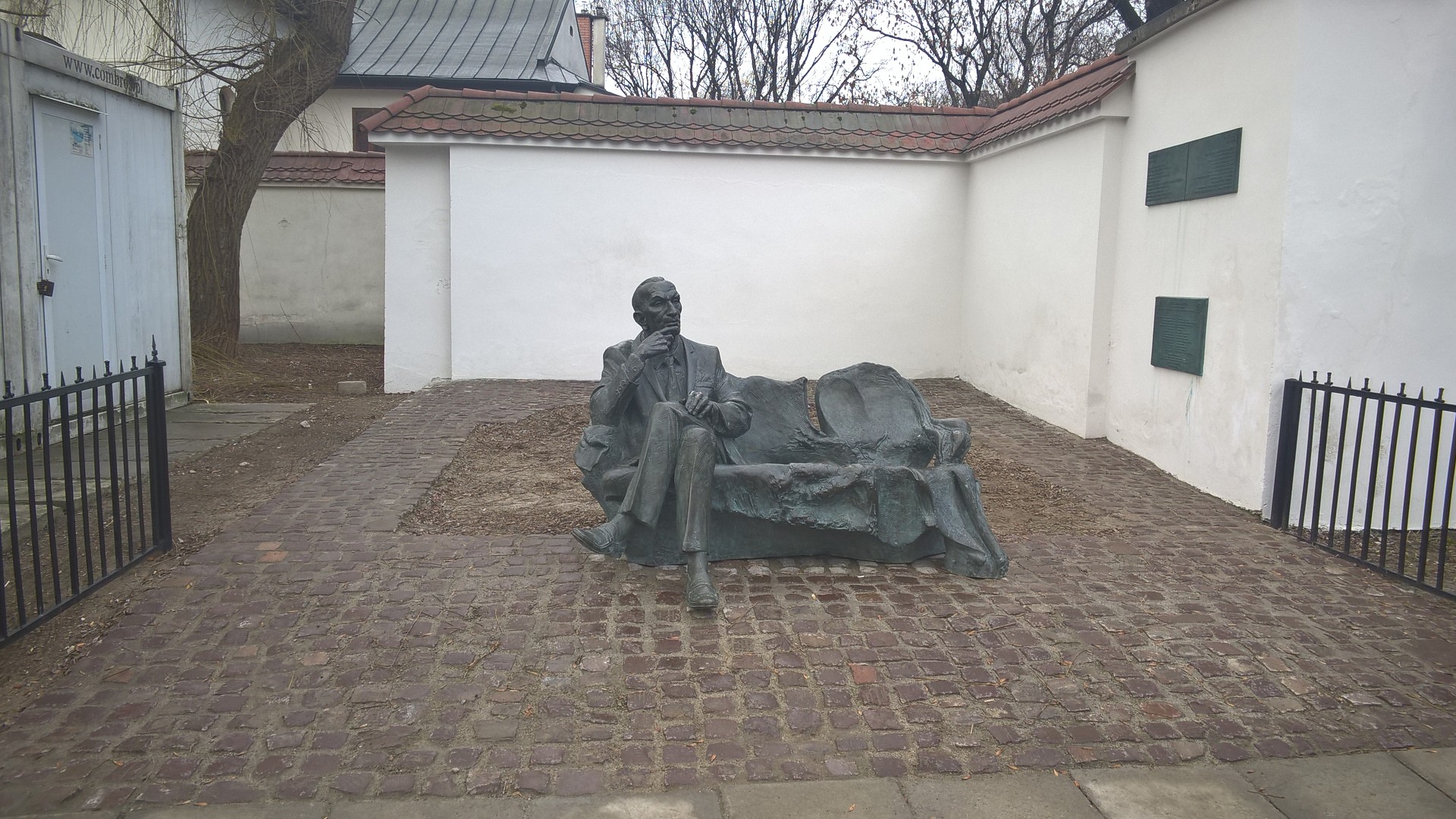
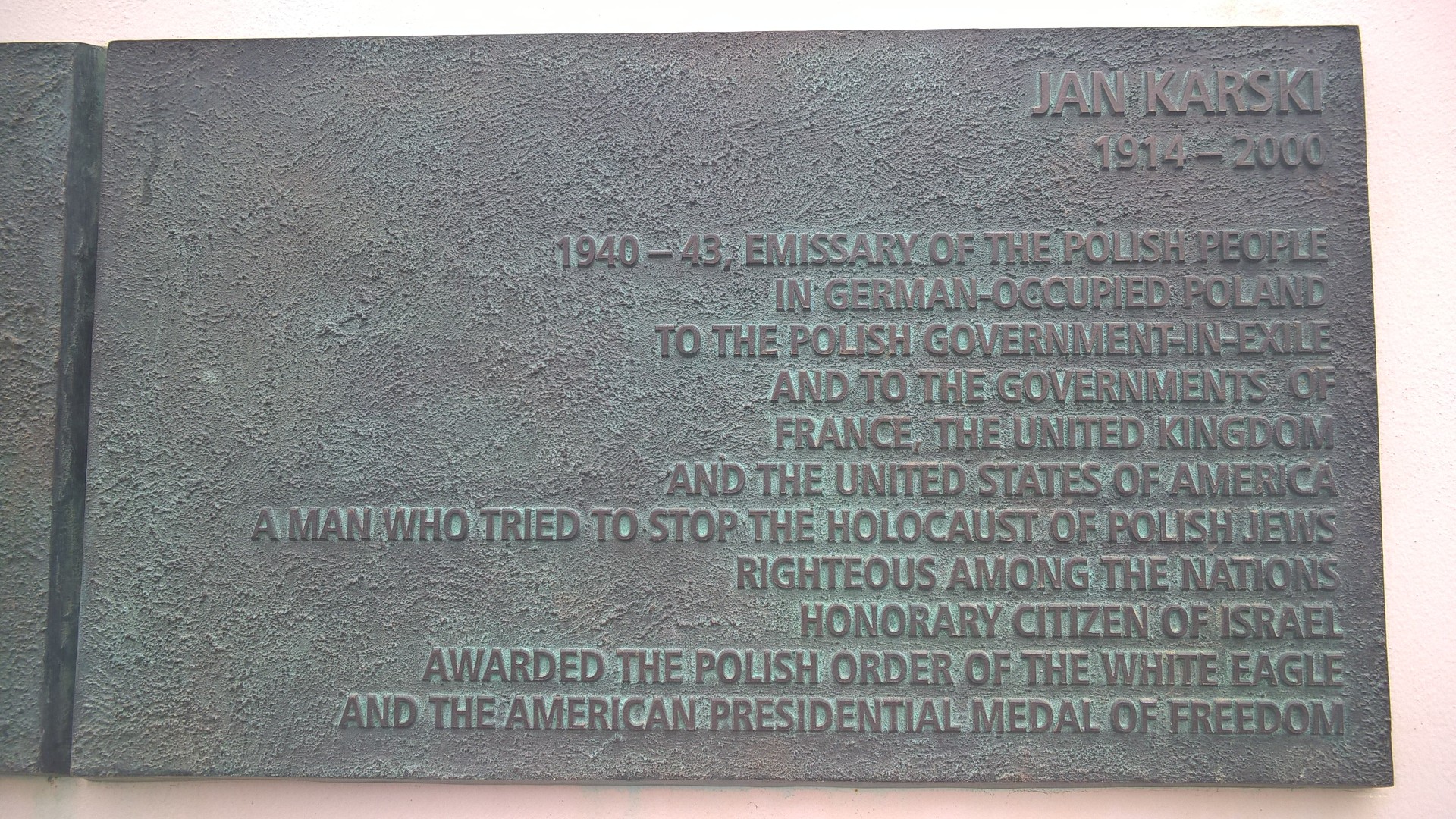 A new visitor on a bench at the entrance to Remuh Synagogue in Cracow. Monument unveiled on January 26th , 2016.
A new visitor on a bench at the entrance to Remuh Synagogue in Cracow. Monument unveiled on January 26th , 2016.
Beit Midrash Hevra Tehilim in Kraków
Three years ago Cracow as shaken with news about the MEZCAL Music Club opened in the Beit Midrash Hevra Tehilim in Kraków. The building dates to 1896 and was housing a large synagogue in the ground flor. The walls are still covered with frescoes, floral ornaments, Jerusalem panorama and mythical creatures as well as Hebrew inscriptions. Three years ago against the religious frescoes and quotations glass shelves were installed proudly showing colorful alcohols and liqueurs. The past religious greatness of Cracow Jewish community was then distorted with opaque alcohol bottles. The only way to see that beauty on the walls was ironically to drink, a rather risky historical exploration method. The building stands proudly at the intersection of Corpus Cristi (Corpses of Christ) and Rabbi Meisels streets, my favorite Cracow address for its schizophrenia.
For the last few months MEZCAL became history. I hope the gravity of the address did away with this loud establishment.
Now major restoration works are underway. As for now restoration to the building as such not to its historical significance and frescoes. The question remains what next?
Rumor has it that one of the Kazimierz cafeteria / clubs will move it and adapt the space.
I am all for making this magnificent space broadly available if only done with respect, care and adding new meaning and understanding to this important historical space.
A good research of what was Beit Midrash Hevra Tehilim for close to 40 years before WW II is lacking.
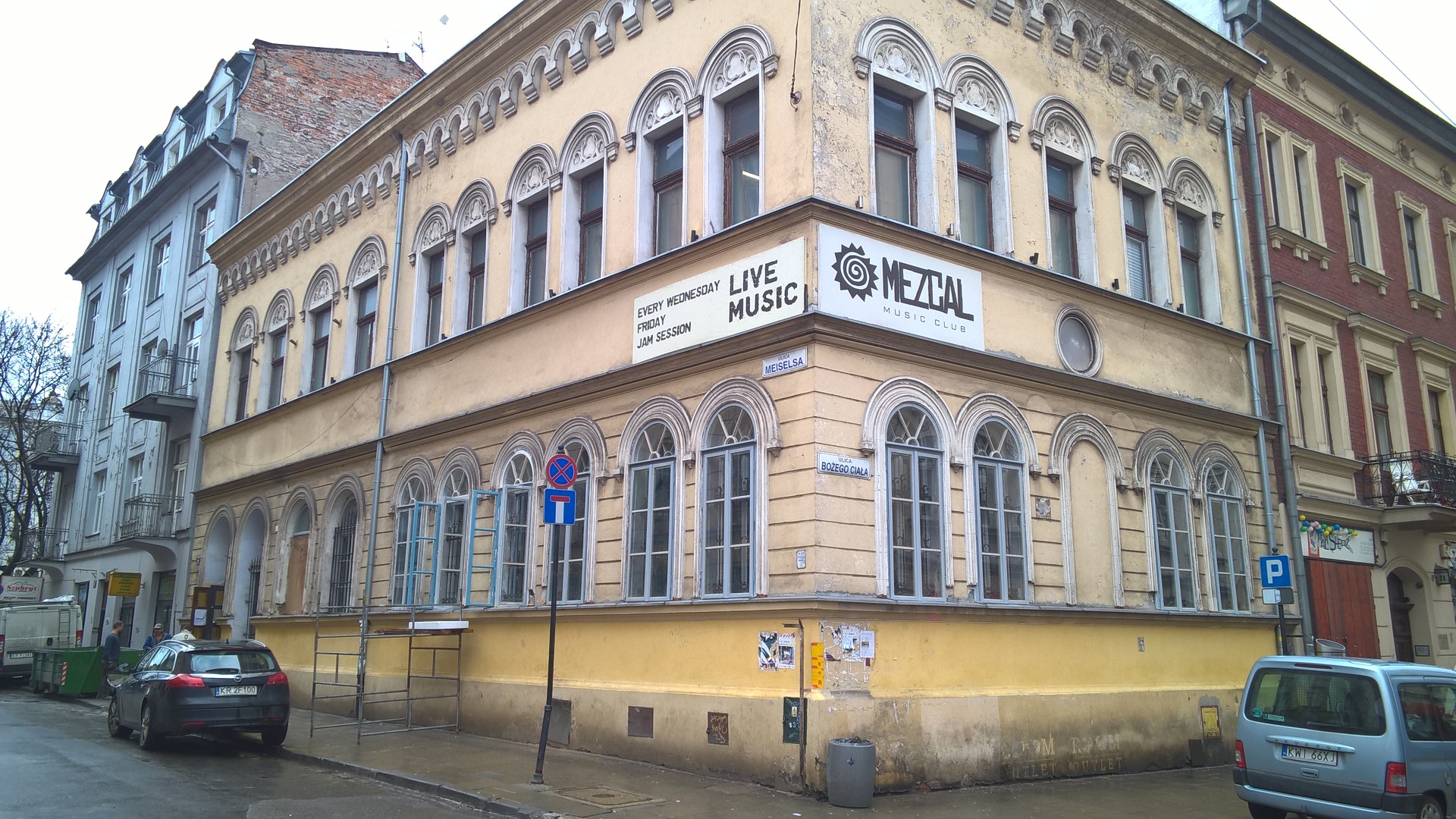
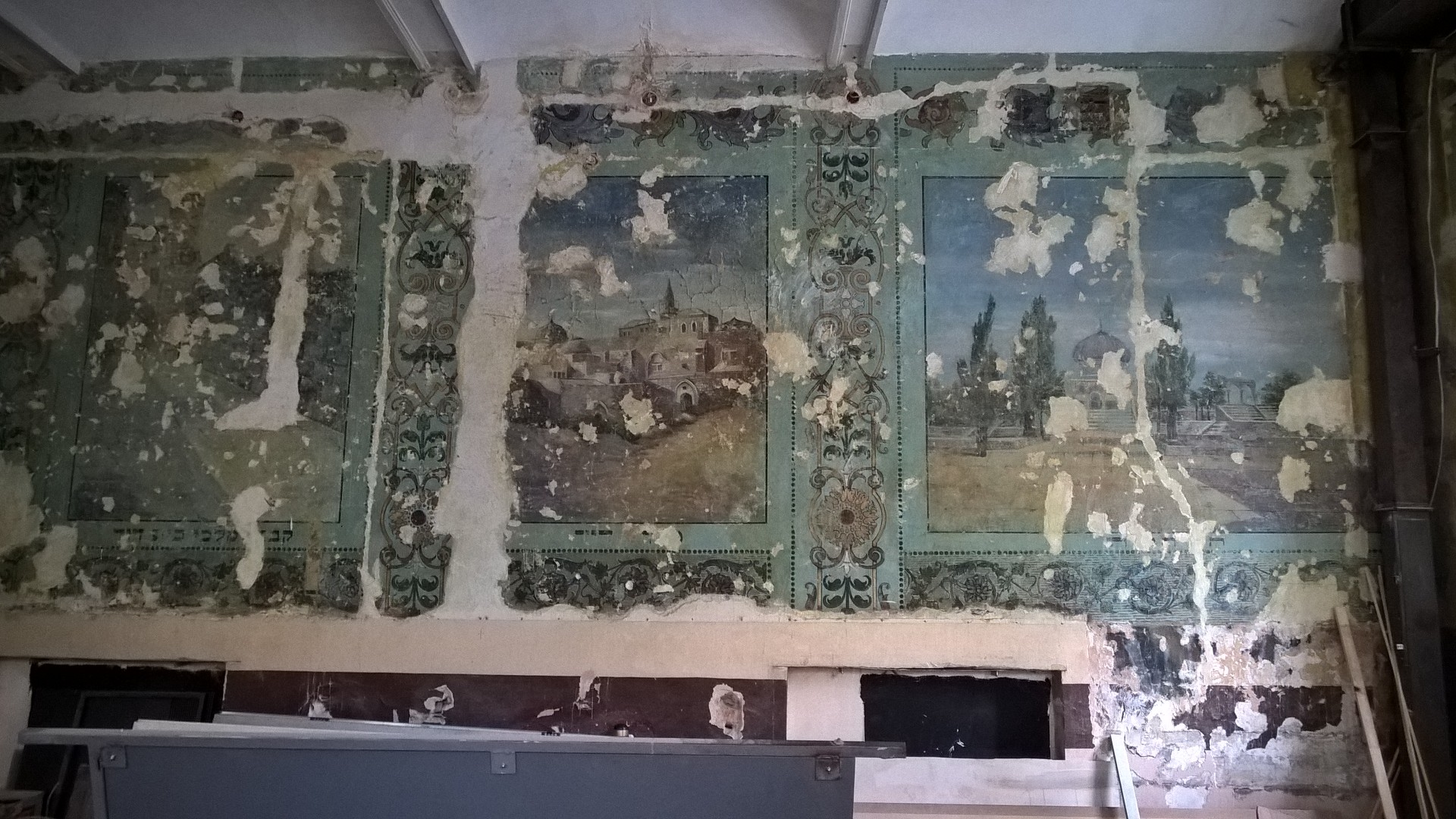
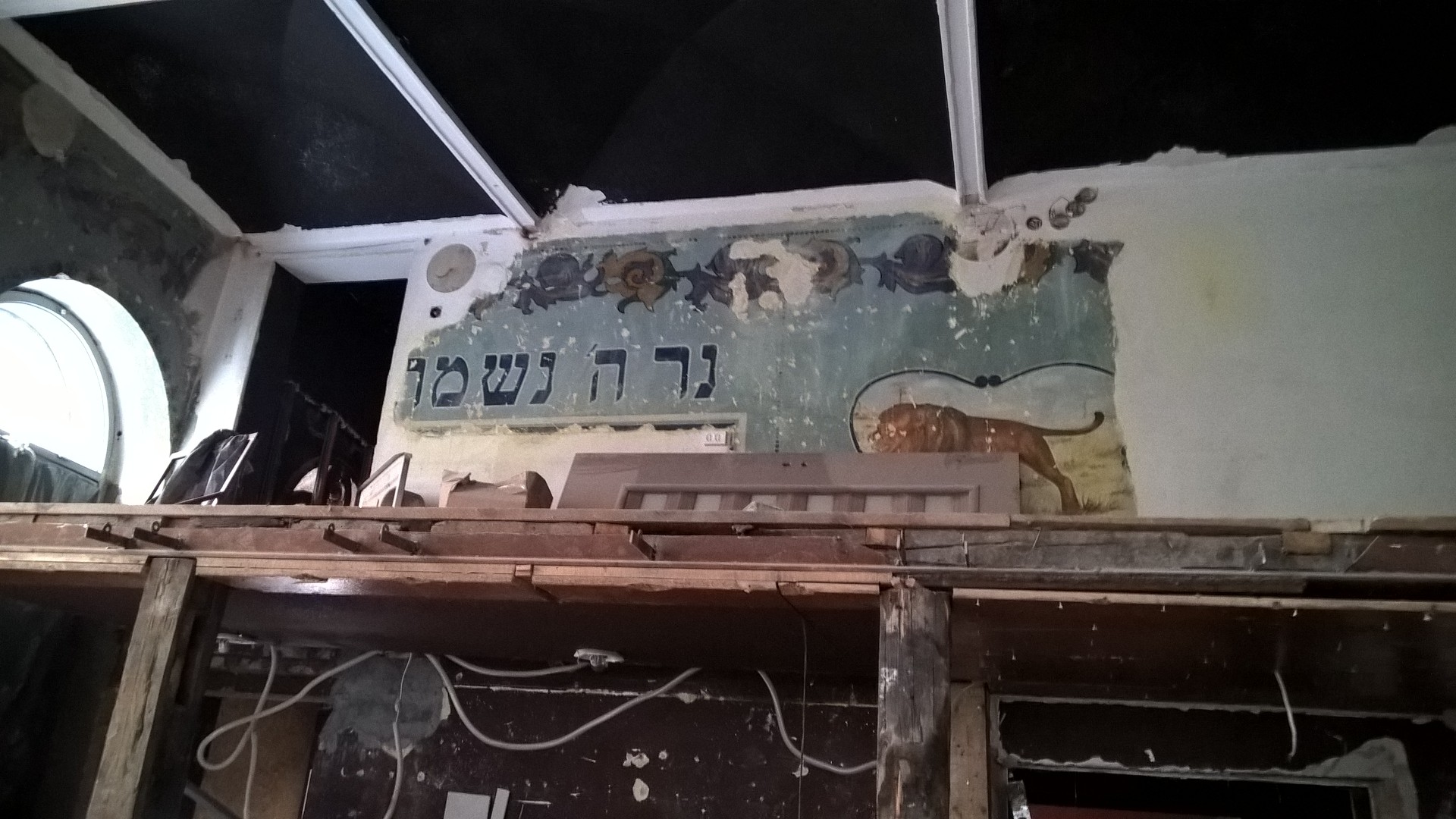
SCHINDLER'S FACTORY - Cracow under the German Nazi occupation from 1939 to 1945
In summer 2010 the Krakow's Historical Museum opened its new branch at the premises of the former Schindler’s Factory. This modern museum is to present the history of Krakow under the German Nazi occupation from 1939 to 1945. Large part of the exhibition is devoted to show life and annihilation of the Krakow’s ghetto. The museum is arranged chronologically, giving the visitor a unique opportunity to follow the war time narration and experience of occupation reality. The numerous artistic means and multimedia presentations enrich the exhibit and help to understand the complexity of Nazi occupation of Krakow and Poland. The first part of the exhibit narrates the city's cultural, ethnic and religious richness in the 20’s and 30’s of the XX century. Stereographic pictures take us into the streets of the city just before the war. Then comes the September Campaign and gradual implementation of the new Nazi regime aimed against local population. The museum creators were able to reconstruct city's streets, prison cells, war time apartments with an successful effort to show general anxiety, chaos and individual human tragedy inflicted by war. The exhibition has many layers of narration and in this way can satisfy people who want to have just a general orientation in the war time in Cracow as well as history experts looking for some additional history details.
We offer certified guides and tours at the Museum in the former Schindler's Factory - "Krakow under the German Nazi occupation from 1939 to 1945".
MARKET SQUARE/RYNEK UNDERGROUND - Following the traces of the European identity of Kraków
In autumn 2010 the Historical Museum of the City of Krakow opened its brand new exhibition in the excavated undergrounds of the Market Square and Cloth Hall building. This museum is the result of many years of archeological works undertaken in the very core of 1000 years history of Krakow and close to 800 years since its location. The archeologists reached the base level, indicating the first human activities in this area around 8 meters below the present surface of the market.
The museum encompasses 700 archeological pieces, 500 digital models of buildings, 600 3D digital models of city structures in the time span of last 1000 years. During a visit we can admire medieval city stalls, cemeteries, cobblestone streets, jewelry and hundreds of artifacts well enhanced and enriched with multimedia presentations, 3D models and holograms. This new branch of the Krakow's Historical Museum provides a time vehicle across the last ten centuries of the city's history and makes every visitor feel the growing, accumulated city's beauty and potential. It will definitely become the main attraction for both inhabitants and tourists.
Page 5 of 7
